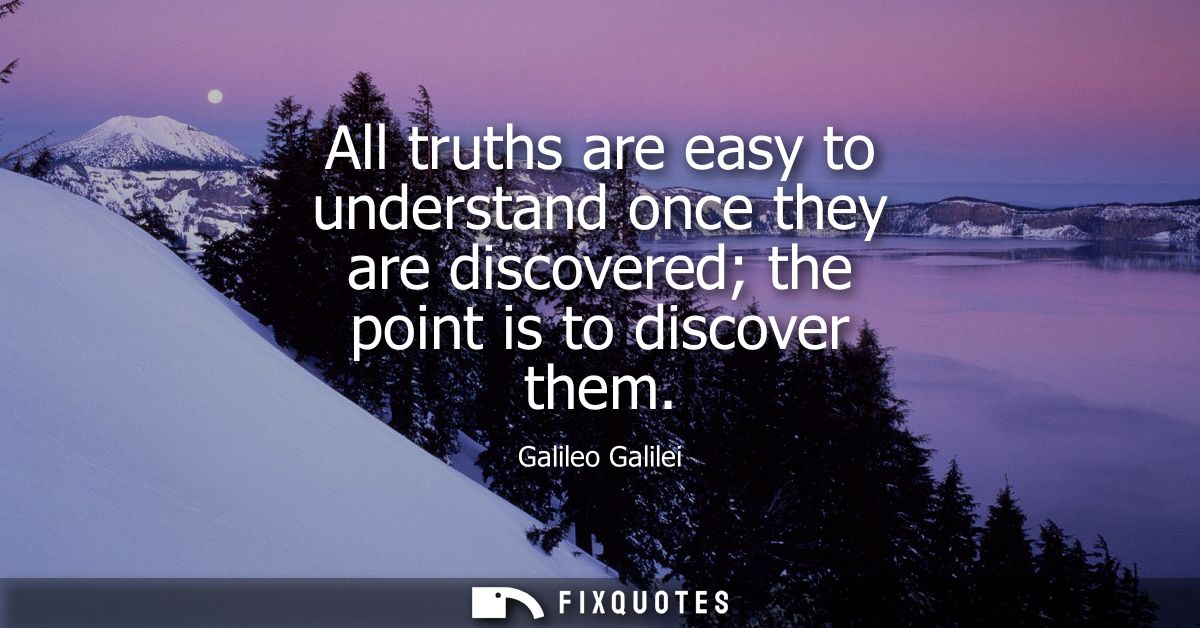"All truths are easy to understand once they are discovered; the point is to discover them"
About this Quote
Galileo Galilei highlights a profound aspect of human understanding and the process of discovery. What often appears complex or mysterious before its revelation quickly becomes simple and self-evident once it is known. The challenge does not lie in grasping the truth itself, humans are innately capable of understanding the principles and patterns that govern the natural world. Instead, the major obstacle is the act of discovery, the journey of unveiling what is hidden or obscured by ignorance, tradition, or misconception.
Throughout history, scientific and philosophical advancements have followed this pattern. Prior to the acceptance of Galileo’s own realization that the Earth orbits the Sun, the heliocentric model seemed radical and incomprehensible to many. Yet, after his observations provided convincing evidence, the logic and simplicity of planetary motion became apparent and widely accepted. The same can be observed in mathematics, physics, and even social sciences; once a solution, theorem, or theory is revealed, its elegance and clarity often provoke a sense of wonder that it was not always obvious.
This perspective encourages a spirit of curiosity and persistence in the face of the unknown. It suggests that, rather than fearing the complexities of nature or ideas, individuals should be driven to seek, probe, and explore without hesitation. The ability to comprehend is within reach, contingent largely upon lifting the veil of ignorance. Such a view democratizes knowledge; no truth is too lofty or complicated, provided one is willing to engage with the process of discovery.
Furthermore, the quote fosters humility. What may seem simple or trivial today was once an enigma, often unraveled through great effort and ingenuity. It reminds us to approach all fields of inquiry with patience, respect for the endeavor of discovery, and awareness that each generation builds on the revelations of those before them.
More details
About the Author

